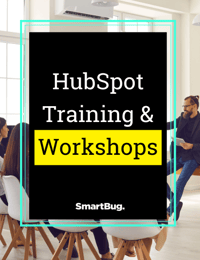
The Good, The Bad, and The Ugly: How Generative Engine Optimization Is Changing Content Creation
May 31, 2024
Content still sits atop a throne in the marketing world, and the king has gotten some fancy new tools in recent years. Artificial intelligence (AI) and generative engine optimization (GEO) are transforming content creation—but, as with every innovation, they offer both promise and potential pitfalls.
How will these new tools impact your marketing efforts? Navigate key benefits and challenges with a few best practices to begin integrating AI technology for your brand.
The Good
As a marketer, you know the most frustrating part of the job isn't coming up with killer ideas—it's finding the time to make them come to life. You may have just the right email campaign in mind or have grand ideas for an engaging infographic, and your team is just as excited to drive results. But you're only human, and you can't drop everything you’re already working on.
Sometimes you need a helping hand and AI delivers.
Efficiency and Speed
AI and generative engine optimization jump-start your creative efforts. With them, you can seamlessly generate:
- Key points
- Outlines
- Rough starter content
Tools can look for patterns and data to quickly generate large volumes of content that you can modify based on your needs.
Writing Consistency
With the help of limitless data, AI improves the consistency of your content and generative engine optimization efforts across channels. You can use its algorithmic data to both target specific audiences and personalize messages, thereby creating engaging content.
SEO Optimization
Context is key, and it matters for your SEO, too. Generative engine optimization enables you to create, structure, and optimize content to address user queries. AI search engines will prioritize this, using deep analysis to summarize and serve up your content at the right time. But classic best practices like experience, expertise, authoritativeness, and trustworthiness (E-E-A-T) still matter, so keep elements like backlinks and sources in your strategy, too.
You can also give SEO a lift by using AI for keyword research and targeting. Generative engine optimization tools work to:
- Identify long-tail keywords
- Enhance keyword placement to improve results
- Increase search engine visibility
The Bad
AI and generative engine optimization for content offer incredible efficiency, but think of them not as experienced executive assistants but as college interns. They’ll tackle any assignment you give them and may offer a few flashes of brilliance, but they can't do what you can. Content that relies too heavily on technology can feel stale or generic—and may not even sound like your brand at all. Here are a few issues to keep an eye out for:
Lack of Creativity and Innovative Thinking
The rub with AI is it isn’t human (duh). It doesn’t bring human elements to the table to stimulate and resonate with audiences. Most notably, AI is missing emotion because the content it generates is based on formulas and probability models. Content missing a little kick? You’ll be hard pressed for AI tools like ChatGPT or Jasper to inject culture-driven language that adds that extra “something,” such as:
- Humor
- Sarcasm
- Empathy
Potential Plagiarism and Missteps
AI is ripe for misinformation and ethical issues, so you must be judicious in using it in your generative engine optimization efforts. Remember, language models reproduce information from their datasets—and although the quick results can keep you moving, you may be unwittingly pulling copy from somewhere else on the internet. That raises copyright implications, whether your content is infringing on someone’s work or your own AI-generated content isn’t protected.
Your team needs to be diligent about monitoring content for errors and plagiarism. You want to be an authority and expert, and AI doesn’t have the moral compass to guide this. In fact, generated content is often subject to AI hallucinations—a fancy way of saying it’ll make things up to fill in its training gaps—making it hard to distinguish fact from fiction.
Difficulty Matching Brand Voice/Tone
Content needs to effectively convey your unique brand voice, including incorporating the right emotions and tone. Because AI content tools don’t know how to do this, you may need to edit content for brand consistency, tone, and voice. Fortunately, content-focused generative engine optimization is iterative, so you’ll have opportunities to tell the AI to shift its tone or even adjust its structure.
The Ugly
You wouldn't let an intern draft and send a letter from your CEO without reading it first, and you shouldn't let AI do too much without your expert supervision, either. Even the most innocent misstep can lead to disastrous consequences. Be mindful of a few mistakes as you work with AI tools:
Over-Reliance on AI
Allowing the technology to take the wheel while you ride shotgun can get messy. Ensure that when an algorithm leverages data, you and your audience understand the context and that it’s accurate. Be the driver to offer up human oversight and make sure copy sounds authentic and makes sense.
Training Biases
It’s a no-brainer: If the data used to train AI is biased, the content it generates will be, too. If you think about the criticisms raised about tools like facial recognition and racial and gender diversity, it’s the same struggle. But you can mitigate this when your standard processes include looking for bias in AI datasets (when available):
- Information and programming errors
- Systemic and social biases that affect content output
Malfunctioning Algorithms
Algorithms on the fritz? Between random programming bugs and legitimate errors, AI issues can impact your generated content. That’s another reason why your human team needs to be part of the content equation, overseeing and editing output to mitigate—or even prevent—problems.
Lack of Transparency
One of the huge gaps with tools like ChatGPT is that when you enter a prompt and it generates output, you have no idea where the underlying algorithms are pulling information from. Beyond the inherent ethical dilemmas this raises, you must also ask: “Is the source reliable?”
Knowing this, as well as leveraging your own research, can enhance your authenticity and minimize the risk of bias in your content.
Make Generative Engine Optimization Part of Your Content Strategy
Content marketing best practices are always changing, and new tools and strategies are popping up all the time. AI and GEO are the new kids on the block, and they have the potential to transform your content creation processes—for better or for worse. Your challenge is to find the right balance of strategies to take advantage of technological advances, stay ahead of the competition, and keep your brand’s heartbeat running through everything.
Curious where to start? SmartBug Media has you covered with our HubSpot AI Training Workshop! Our 10-hour training course led by HubSpot-certified experts will show you how to leverage AI for marketing, sales, and customer success. Book your training today to make AI work for you.
About the author
Courtney Fraas was formerly a SmartBug Media Inbound Marketing Strategist based in Savannah, GA. With eight years of marketing experience, Courtney specializes in copywriting, visual design and project management. When she isn’t crafting customer-focused messaging, Courtney is busy traveling near and far, playing with her pup, and becoming an expert Airbnb host. Read more articles by Courtney Fraas.










